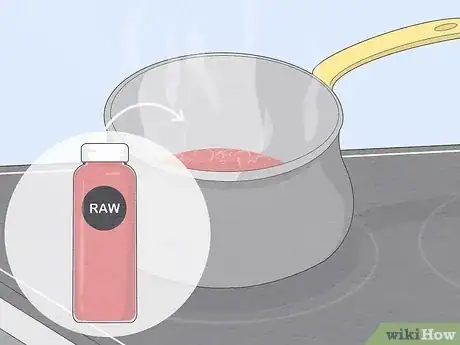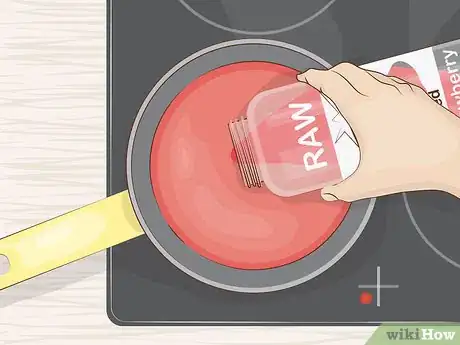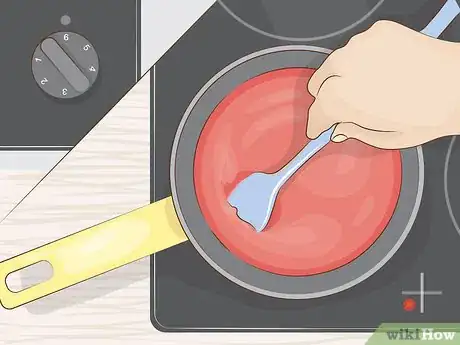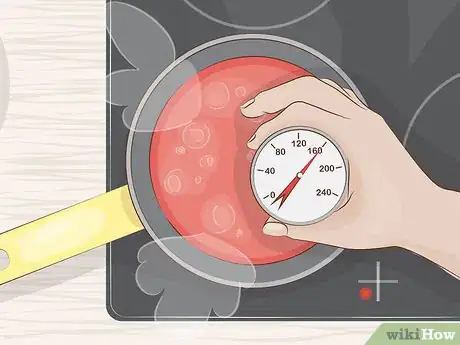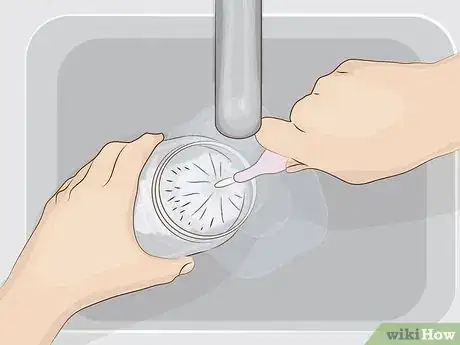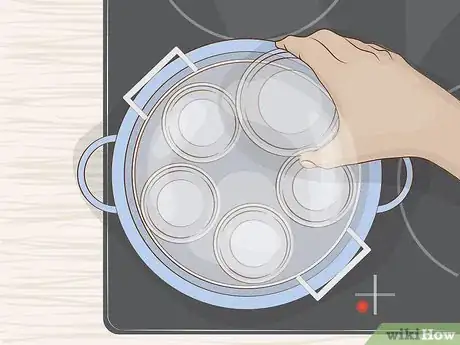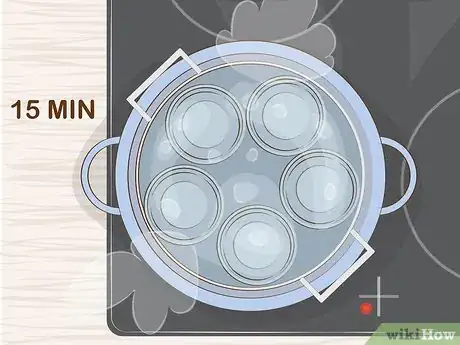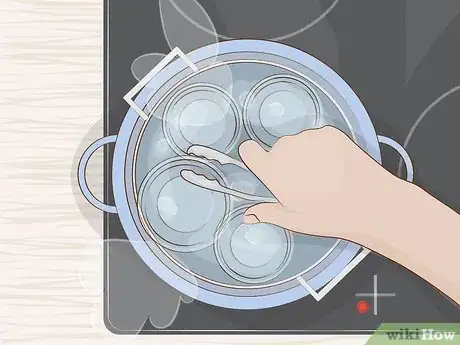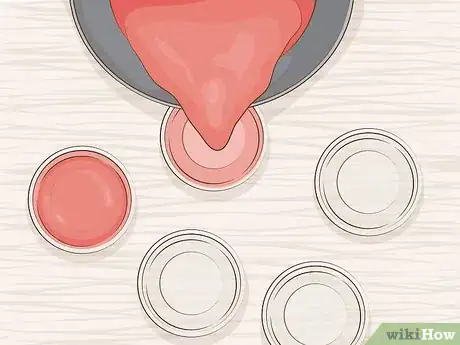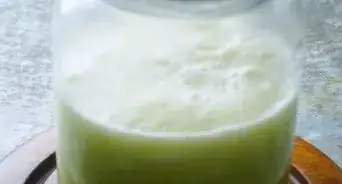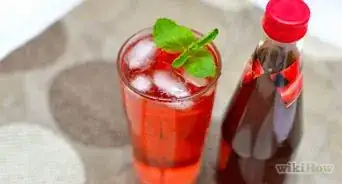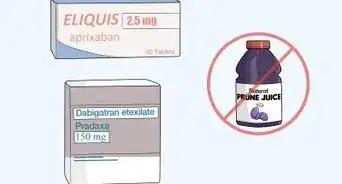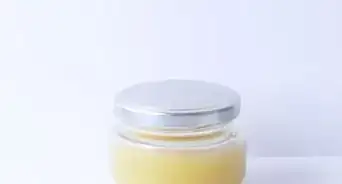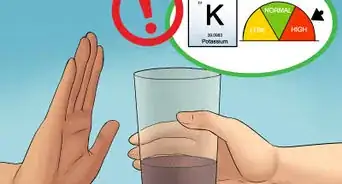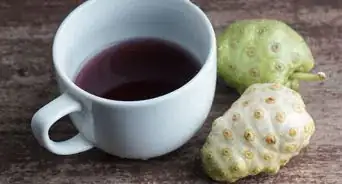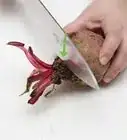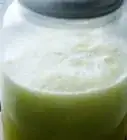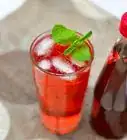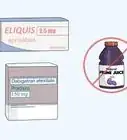This article was co-authored by Ollie George Cigliano. Ollie George Cigliano is a Private Chef, Food Educator, and Owner of Ollie George Cooks, based in Long Beach, California. With over 20 years of experience, she specializes in utilizing fresh, fun ingredients and mixing traditional and innovative cooking techniques. Ollie George holds a BA in Comparative Literature from The University of California, Berkeley, and a Nutrition and Healthy Living Certificate from eCornell University.
This article has been viewed 116,567 times.
Pasteurizing raw juice kills harmful bacteria so it can't make you sick. Pasteurizing is a fairly simple process. You simply heat up the juice to just below boiling. Be sure to pour it into a clean container, as you'll just recontaminate if you don't. To increase the time you have to drink it, pour it into sterilized jars.
Steps
Heating Juice to Pasteurize It
-
1Pasteurize any raw juice. Raw juices can carry bacteria that can make you sick, particularly E. coli. To counteract the effect, you should pasteurize any juice that is labelled as raw. According to Chef Ollie George Cigliano, "By FDA standards, juice is pasteurized at a temperature of 71-73°C (160-163.4°F) for 15 seconds."[1] However, if the juice says "pasteurized" on the label, it's safe to drink as is.[2]
-
2Pour the juice into a large pot. Start with a clean pot large enough to hold the juice with some extra room at the top for bubbling. Place the pot on the stove. Pour the juice into the pot.Advertisement
-
3Heat the mixture over high heat. Chef Ollie George Cigliano emphsizes that it's important to keep an eye on the juice: "Juice should not boil; lower heat if it becomes too hot and use a thermometer to gauge temperature accurately. This method gives you the best timing for the maintenance of vibrant color and nutrition properties from the fruits, vegetables & herbs used in juicing."[3] Turn the burner on high, and let the mixture heat. You need to keep an eye on the mixture while it heats, You're waiting for it to simmer so you can time it and check the temperature.[4] Stir the mixture often while it heats.
- You may want to use a double boiler. A double boiler is one pot placed over another pot, and the bottom pot has water in it. The water provides heat to the top pot, but it is gentler than a typical burner.[5]
-
4Check the temperature once the juice starts simmering. According to Chef Ollie George Cigliano, the juice needs to stay at "a temperature of 160 °F (71 °C)-163.4 °F (73.0 °C) for 15 seconds."[6] Use a candy thermometer to check the juice once it's simmering, but don't touch the sides of the pan with the thermometer, as that will give you a bad reading.[7]
Cleaning Jars for the Juice
-
1Wash the jars. You can use mason jars or any glass jar that can be sterilized for this process. Wash the jars out in hot water and soap, and then rinse them clean to prepare for the sterilization process.[10]
-
2Boil the jars.[11] Place the jars in a water-bath canner. You can also use a large pot. Fill the pot or canner with water, and submerge the jars. Place the pot over high heat, and let the water come to a boil.[12]
- When using a pot, a rack can help you pull the jars out later.
- If you use tongs, make sure they're sterilized, too.
-
3Let the jars boil for fifteen minutes. Once you see steam coming up from the pot, cover the pot with a lid. Let it boil for fifteen minutes before turning off the heat. The jars can sit in the pot to keep warm.[13]
- You'll also need to boil the lids for five minutes.
-
4Use tongs to pull the jars out. You can place the jars upside down on a towel to drip water.[14] However, since you're just filling them with juice, you can also shake most of the water out and move on to filling them.
-
5Pour the juice in. Fill the containers with the hot juice. The jars need to be hot, as well, or they could break when pouring in hot juice. Screw on the clean lids to preserve the pasteurization.[15]
- Don't let the juice cool down before you bottle it, as that reduces its shelf life.
Expert Q&A
-
QuestionCan you boil fresh juice?
 Ollie George CiglianoOllie George Cigliano is a Private Chef, Food Educator, and Owner of Ollie George Cooks, based in Long Beach, California. With over 20 years of experience, she specializes in utilizing fresh, fun ingredients and mixing traditional and innovative cooking techniques. Ollie George holds a BA in Comparative Literature from The University of California, Berkeley, and a Nutrition and Healthy Living Certificate from eCornell University.
Ollie George CiglianoOllie George Cigliano is a Private Chef, Food Educator, and Owner of Ollie George Cooks, based in Long Beach, California. With over 20 years of experience, she specializes in utilizing fresh, fun ingredients and mixing traditional and innovative cooking techniques. Ollie George holds a BA in Comparative Literature from The University of California, Berkeley, and a Nutrition and Healthy Living Certificate from eCornell University.
Private Chef & Food Educator Juice should not be boiled. Use low heat and a thermometer to gauge temperature accurately. This method gives you the best timing for the maintenance of vibrant color and nutrition properties from the fruits, vegetables and herbs used in juicing.
Juice should not be boiled. Use low heat and a thermometer to gauge temperature accurately. This method gives you the best timing for the maintenance of vibrant color and nutrition properties from the fruits, vegetables and herbs used in juicing. -
QuestionHow do I pasteurize juice in a plastic bottle?
 Community AnswerYou have to use non-plastic for the process and then transfer the juice to a plastic container once it is cool.
Community AnswerYou have to use non-plastic for the process and then transfer the juice to a plastic container once it is cool. -
QuestionCan fresh apple juice be pasteurized in a microwave oven?
 Community AnswerYou can achieve the needed temperature in a microwave, but controlling the temperature for the desired time is near impossible. You'll very likely overheat your juice in a microwave, and you'll compromise the cellular structure of your juice, ultimately ruining it's flavor if you nuke it.
Community AnswerYou can achieve the needed temperature in a microwave, but controlling the temperature for the desired time is near impossible. You'll very likely overheat your juice in a microwave, and you'll compromise the cellular structure of your juice, ultimately ruining it's flavor if you nuke it.
References
- ↑ Ollie George Cigliano. Private Chef & Food Educator. Expert Interview. 30 August 2021.
- ↑ https://www.healthlinkbc.ca/healthlinkbc-files/unpasteurized-fruit-juice-health-risk
- ↑ Ollie George Cigliano. Private Chef & Food Educator. Expert Interview. 31 January 2022.
- ↑ https://extension.oregonstate.edu/food/preservation/preserving-foods-fruit-juice-apple-cider-sp-50-455
- ↑ https://www.healthlinkbc.ca/healthlinkbc-files/unpasteurized-fruit-juice-health-risk
- ↑ Ollie George Cigliano. Private Chef & Food Educator. Expert Interview. 31 January 2022.
- ↑ https://extension.oregonstate.edu/food/preservation/preserving-foods-fruit-juice-apple-cider-sp-50-455
- ↑ Ollie George Cigliano. Private Chef & Food Educator. Expert Interview. 31 January 2022.
- ↑ Ollie George Cigliano. Private Chef & Food Educator. Expert Interview. 31 January 2022.
- ↑ https://www.epicurious.com/recipes/food/views/to-sterilize-jars-and-lids-for-preserving-102234
- ↑ Ollie George Cigliano. Private Chef & Food Educator. Expert Interview. 31 January 2022.
- ↑ https://www.epicurious.com/recipes/food/views/to-sterilize-jars-and-lids-for-preserving-102234
- ↑ https://www.epicurious.com/recipes/food/views/to-sterilize-jars-and-lids-for-preserving-102234
- ↑ https://www.epicurious.com/recipes/food/views/to-sterilize-jars-and-lids-for-preserving-102234
- ↑ https://www.healthlinkbc.ca/healthlinkbc-files/unpasteurized-fruit-juice-health-risk
